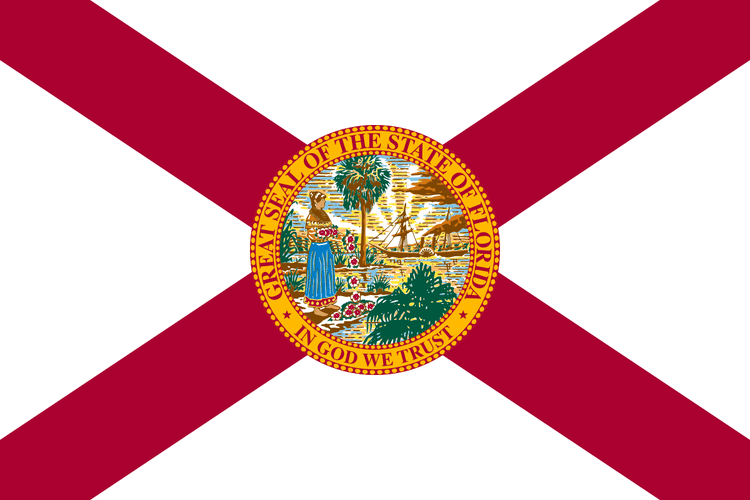 | ||
The following outline is provided as an overview of and topical guide to the U.S. state of Florida:
Contents
- Geography of Florida
- Places in Florida
- Environment of Florida
- Natural geographic features of Florida
- Regions of Florida
- Administrative divisions of Florida
- Government and politics of Florida
- Executive branch of the government of Florida
- Legislative branch of the government of Florida
- Judicial branch of the government of Florida
- Law and order in Florida
- Military in Florida
- History of Florida
- History of Florida by period
- History of Florida by region
- History of Florida by subject
- Culture of Florida
- The arts in Florida
- Sports in Florida
- Economy and infrastructure of Florida
- Education in Florida
- References
Florida – third most populous and the southeasternmost of the 50 states of the United States of America. Florida lies between the Gulf of Mexico and the North Atlantic Ocean. The Territory of Florida joined the Union as the 27th state on March 3, 1845. Florida joined the Confederate States of America during the American Civil War from 1861 to 1865, but was readmitted to the Union in 1868.
Geography of Florida
Places in Florida
Environment of Florida
Natural geographic features of Florida
Regions of Florida
Administrative divisions of Florida
Government and politics of Florida
Executive branch of the government of Florida
Legislative branch of the government of Florida
Judicial branch of the government of Florida
Law and order in Florida
Military in Florida
History of Florida
History of Florida, by period
History of Florida, by region
History of Florida, by subject
Culture of Florida
The arts in Florida
Sports in Florida
Economy and infrastructure of Florida
Education in Florida
References
Outline of Florida Wikipedia(Text) CC BY-SA
